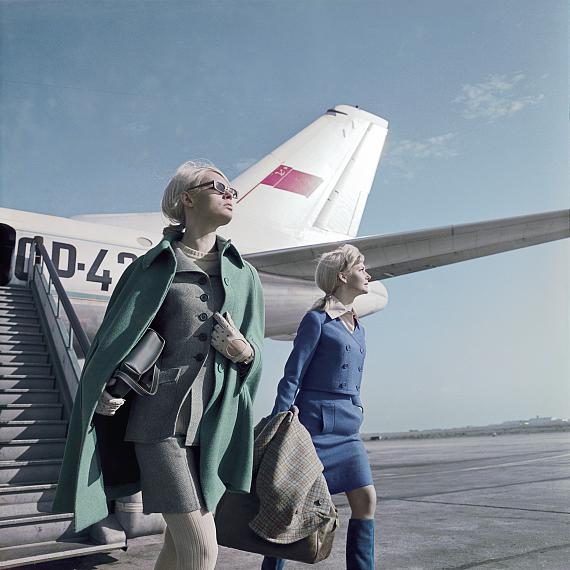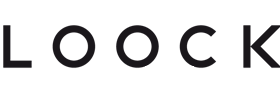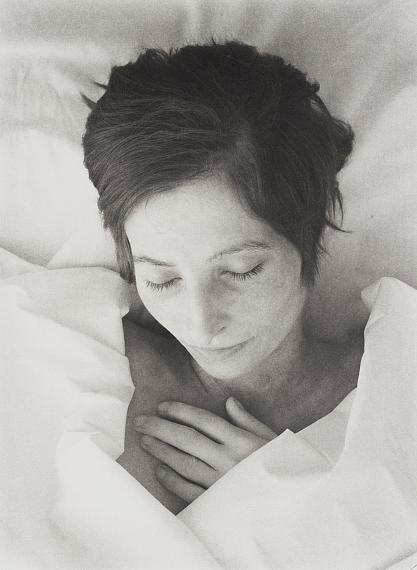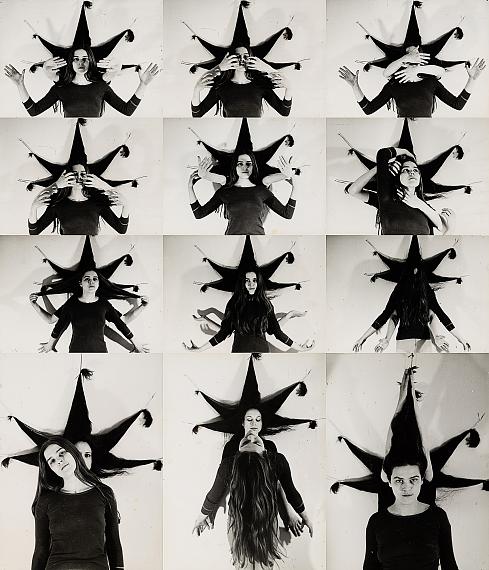
Abflug / Ankunft Berlin-Schönefeld, 1967
© Arno Fischer
Paris Photo 2021
Sibylle Bergemann » Arno Fischer » Gregory Halpern » Manfred Paul » Rudolf Schäfer » Gabriele Stötzer » Ulrich Wüst »
Fair Presentation: 11 Nov – 14 Nov 2021
Wed 10 Nov
Grand Palais Ephémère - Booth A25
Champ-de-Mars, Place Joffre
75008 Paris

Loock Galerie
Ackerstr. 171
10115 Berlin
+49 (0)30-394096850
info@loock.info
www.loock.info/pages/
Thu-Sat 12-18

Der ewige Schlaf – Visages de morts *1946 † 1981 Berlin, 1981/2021
© Rudolf Schäfer
Arno Fischer’s work for Sibylle turned what many initially regarded as an 'old-fashioned magazine' into a coveted cultural item from the early 1960s onwards. He found his natural-looking models on the streets of East German cities and photographed them either on the move or posing against the backdrop of ruins and voids (traces of Germany’s past) and new building projects (signs of East Germany’s future). He also photographed his models on sets and in the studio and experimented with props. By doing so, he quickly changed the standards of East German fashion photography and attracted the attention of Sibylle Bergemann (1941–2010), Roger Melis (1940– 2009), Brigitte Voigt (*1934), Elisabeth Meinke (1937–2006), and Michael Weidt (*1946), photographers who, together with Fischer, made up Gruppe DIREKT. The subject of an exhibition that the Loock Galerie presented at the 2019 Armory Show in New York, this group of photographers would also go on to work for Sibylle and would essentially transform the landscape of East German illustrated magazines. Rudolf Schäfer will be presented with "Reproduktion", his large-scale study of East German society, which LOOCK exhibited during the summer of 2021—for the first time since this body of work was initially exhibited in 1984. Divided into the five chapters — Kriegsspuren, Totengesichter, Porträts, Stadtbild and Generation — the images paint a subtle picture of society, which deviated from the cultural policy promoted by the state party. Among other things, Schäfer photographed the emptiness and decay of East Berlin‘s urban topography, groups of young people and the recently deceased. All of these themes relate to questions of impermanence and the nature of time. Schäfer’s compositional restraint and the technical precision of his large format camera create an 'imagined objectivity' — an impression suggesting that he has a mere documentary interest in his subjects. However, despite being firmly connected to specific places and dates, Schäfer’s impartial depiction transfers the motifs into a sphere, in which their analysis is not predetermined by their temporal or spatial qualities. His unsentimental yet dignified imagery is a means to an end: death, destruction and generational change—they all take on a more static aura to allow for a focused meditation on the essence of things. Gabriele Stötzer will present a selection from her photographic oeuvre from the 1980s as well as a video installation. Working across a variety of different media, Stötzer is now widely considered to be one of the most important German feminist artists of her generation. Defying the confines imposed on her by the repressive political system of the GDR, she developed an art practice that pioneered many themes of contemporary political art by questioning gender roles and cultural norms through performance, photography, textiles, writing, painting, ceramics, and film. Centered around the body as the starting point and object of her artistic output, Stötzer created a body of work that is unique in its scope. In this context, the female body unfolds its immanent potential to challenge the status quo, to provoke what is forbidden and to confront the viewer with a subversive counter-image to the state-sanctioned version of being a woman. Stötzer's photographic work is exemplary of this. The depicted bodies are 'social sculptures', resilient figures that occupy and open up new spaces for themselves instead of serving as mere surfaces onto which male gaze and thought is projected. By exploring the body through her distinctive use of photography, she managed to capture brief moments of liberation from the constraints of life in East Germany.

Voreinander, 1984
© Gabriele Stötzer